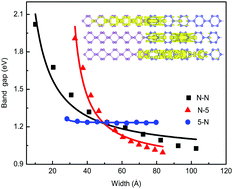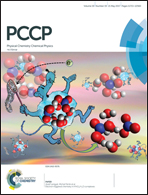Size and strain tunable band alignment of black–blue phosphorene lateral heterostructures
Abstract
Single-element lateral heterostructures composed of black and blue phosphorene are not only free from lattice mismatch but also exhibit rich physical properties related to the seamlessly stitched interfaces, providing the building blocks for designing atomically thin devices. Using first-principles calculations, we investigate the influence of interface structure, size effect and strain engineering on the electronic structure, effective masses and band alignment of black–blue phosphorene lateral heterostructures. The lateral heterostructure with an octatomic-ring interface presents a strong metallic feature due to the interface states, while a metal–semiconductor transition takes place in the system with a hexatomic-ring interface upon hydrogen passivation. Following a reciprocal scaling law, the band gap is tuned in a wide energy range by synchronously increasing the widths of black and blue phosphorene or by only widening that of black phosphorene. Moreover, type-II band alignment is observed in the width ranges of 2.0–3.1 nm and 3.7–4.2 nm, out of which it is type-I. However, the band gap and effective masses show small changes if only the width of blue phosphorene is altered. When the lateral heterostructure is tensile loaded, the effective mass ratio of hole to electron is enlarged by an order of magnitude at a strain of 4% along the zigzag direction. Meanwhile, the band alignment undergoes a crossover from type-I to type-II at a strain of 2%, facilitating efficient electron–hole separation for light detection and harvesting.



 Please wait while we load your content...
Please wait while we load your content...